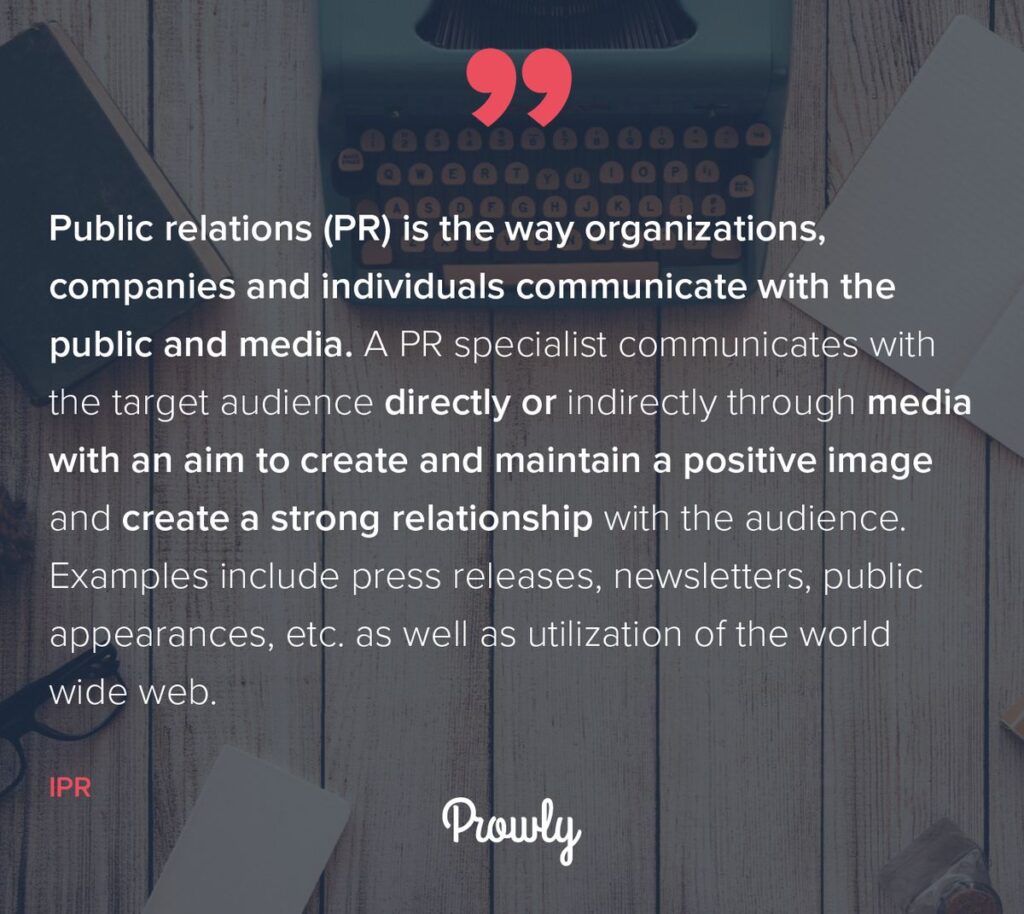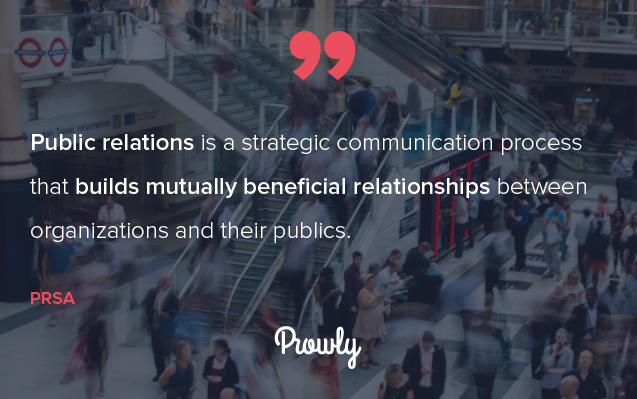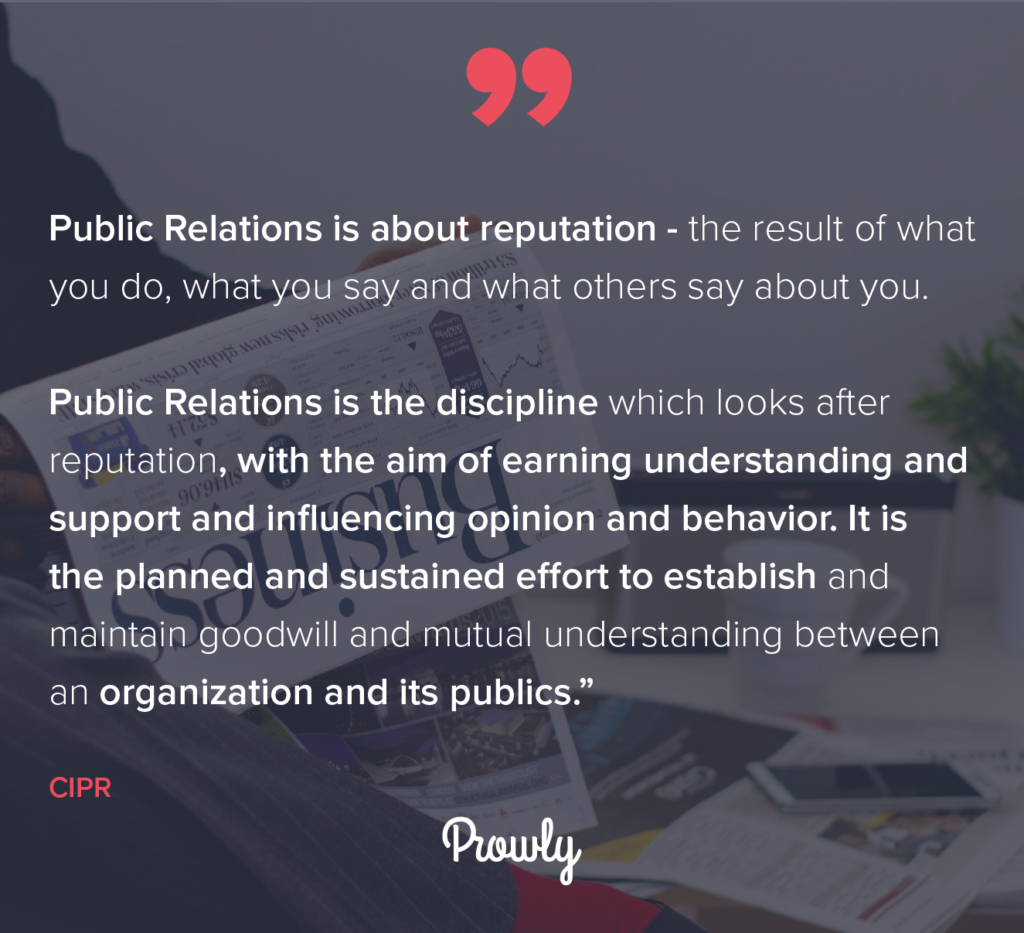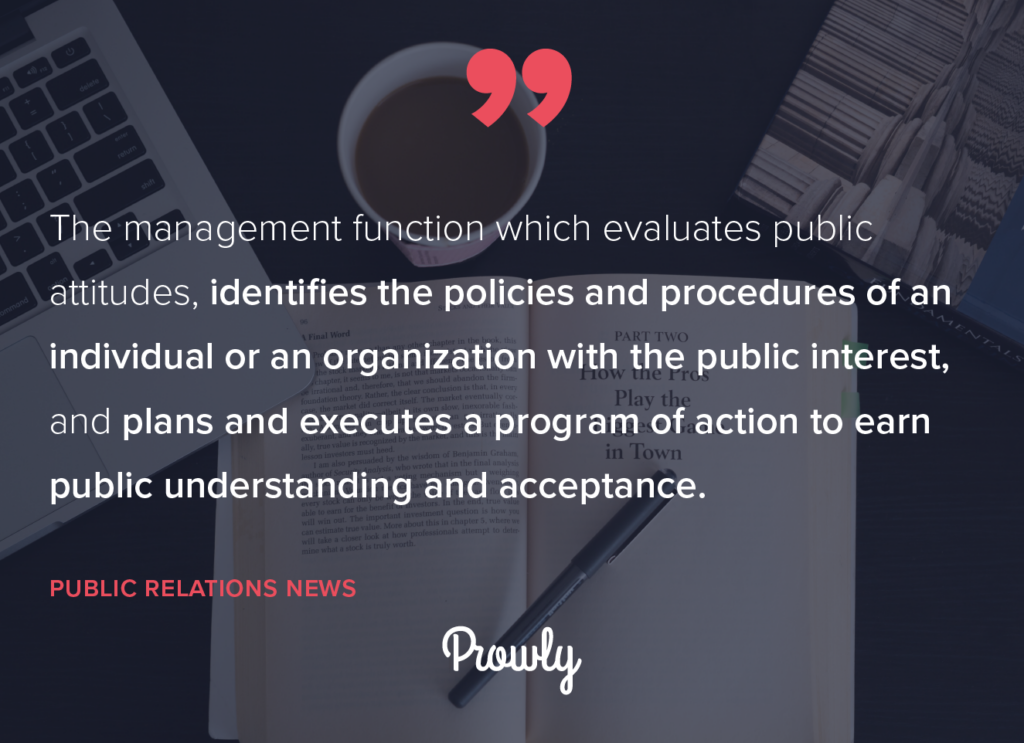What is PR nowadays? Can you share with me your public relations definition? I bet you do.
“We live in a constant communication cycle. Anyone can become the next opinion leader. In the face of these changes, the role of public relations is changing”– declared our CEO, Joanna Drabent, last year. Quite logical. Communication is nowadays more contextual, personalized, geolocated, and just-in-time, and consumers are more enlightened and empowered than ever. We all have to adapt to the digital transformation. But do we, people responsible for communication, understand it?
Our small experiment with the fax proves that not necessarily. PR experts still use heavy, outdated office app suites and spreadsheets or even fax (yes!) to manage their daily activities. It takes too much time. (BTW: That’s why we created Prowly)
Anyway, What Is Public Relations Today?
“The formal practice of what is now commonly referred to as public relations dates back to the early 20th century. In the relatively brief period leading up to today, public relations has been defined in many different ways, the definition often evolving alongside public relations’ changing roles and technological advances, which we mentioned above.” This is what PRSA has to say on the topic.
Different Organizations, Different Public Relations Definitions
IPR puts it simply:

In 1982, the PRSA National Assembly adopted this definition: “Public relations helps an organization and its publics adapt mutually to each other.” In 2011‒12, PRSA spearheaded an international project aimed at updating the definition of public relations. It included a crowdsourcing campaign and a public vote that resulted in the following:

The Chartered Institute of Public Relations (CIPR) stresses a different aspect of public relations. It underlines that every organization, no matter how large or small, ultimately depends on its reputation for survival and success. And in today’s competitive market, reputation can be a company’s biggest asset – the thing that makes you stand out from the crowd and gives you a competitive edge. Effective PR – we read in CIPR statement – can help manage reputation by communicating and building good relationships with all organization stakeholders.
Read related article: Public Relations. The Ultimate Guide for 2020

The main definition of public relations used by the PRIA is almost the same. However, with the massive change in the communication process brought about by the information era, public relations – explains the PRIA on its website – could be easily described as:

What Does Public Relations Mean to PR Practitioners?
For Jason Falls (the author of the article “Social Media Is The Responsibility Of Public Relations”), what is most telling in your social media efforts, is the message. And that is for him most likely already being supplied by your public relations or communications arm. Falls underlines: “As soon as three to five years from now, I see social media marketing as an almost exclusive domain of public relations professionals, so long as we get our collective heads out of our asses and learn how to do it. Some of us are there. Many of us are not. Too many of us think social media is newspapers in Eastern Europe.”
Here Are 15 Public Relations Definitions From Experienced PR Practitioners:

Danielle Hibbert, Senior Project Manager at Belfast-based consumer PR agency Clearbox
In 2006, for me, it was simply about building and managing a brand’s reputation – how companies or individuals are perceived, how they perceive themselves and how any disconnect between the two can be addressed. This relied heavily on strong media relations and resulted in positive coverage in newspapers, magazines, TV, and radio. Job done.
In 2016, reputations are still at the heart of PR, but the road is longer and has many more twists and turns. Today, for me, PR is about the art of communicating, creating debate, shaping personalities, influencer relationships, producing quality content, and owning the conversation. We also can’t ignore the rising importance of search engine optimization as an objective in our PR campaigns.

Rafał Sałak, Communications Lead at Prowly
Public relations is communication of an intended message that aims to result in a shift of audience’s attitude (towards a person, brand, event, etc.)

Jordan Townley, PR & CSR Specialist
For me, the definition of PR is reputation management. It's ensuring that your brand has a clear message and successful PR is ensuring that message is effectively represented and interpreted to the right audience. Effective PR is about being proactive, not just reactive to situations or brand/business activity. With the rise of PESO (Paid, Earned, Shared, and Owned), PR's need to focus on content with transparency is key.
💡 Tip: Explore this article to learn more about how reactive PR compares to proactive PR—and how to put it into action.

Charlie de Mierre, Creative Director at Porter Novelli London
PR is the art of convincing others (consumers, media, influencers, etc.) of a company, brand, or product’s relevance, rather than simply telling them. PR agencies have always worked to provide their clients with reasons to be talked about and to help them identify and communicate a purpose in people’s lives. It’s been the only way to grab the audience’s attention without paying for it. And in a rapidly evolving digital world, this is what consumers are demanding more and more. They have become disillusioned with companies who have crumbled in the face of social and digital transparency and are now proactively choosing brands that are authentically on their side. They want brands with a purpose, brands that give customers good and relevant reasons to choose them. And that’s why PR is becoming an increasingly powerful discipline – because we’ve been doing just that for years.

Stephen Waddington, Chief Engagement Officer at Ketchum
Public relations is the practice of understanding the purpose of an organization and its relationships within society. It is the planned and sustained activity of engagement between these two parties to influence behavior change, and build mutual understanding and trust. Engagement between an organization and its publics is the core of public relations practice. It is a two-way process by which an organization communicates with its publics and vice versa.
Ian Mude, Group Development Director at Be Heard
Katarzyna Kamińska, Contributor/Writer at 150sec.com
Angu Ransom, Founder at RANSBIZ
@edyta_kowal @KataKaminska @JimmySpeath88 @HashtagCuisine @azehrams Done well: clear, consistent message. Done badly: the opposite.
— Ian Maude (@IanMaude) March 1, 2016



Kristen Tischhauser, Managing Partner at talkTECH
Public relations is the act of spreading awareness on behalf of a company, product, brand, or individual. Publicists do this for their clients by garnering media coverage, creating partnerships, owned content strategy, etc.

Grzegorz Miller, Blogger at Social-pr.pl
Public relations: everything that’s done in order to create or maintain a subject’s public image in a specified target group. The subject of these activities could be a product, a company, or its department, an individual, or an idea. The target group could be narrow (for niche products) as well as very broad (for example a whole social group). PR is carried out with various tools - both traditional, like media relations, advocacy, or employer branding, and modern, like social media relations.

Filip Kochan, Communications Officer, Poland and the Baltics, World Bank
We are living in an era when huge amounts of information are available wherever we are and whatever we do. Radio, television, printed press, social media, blogs, internet portals - a whole range of different content available at our fingertips twenty-four hours a day, seven days a week. At the same time, a human being is a cognitive miser, as first described by Susan Fiske and Shelley Taylor in 1991. One is only capable of learning, understanding, and using a small portion of information that he or she is bombarded with.
It is at the confluence of this flood of information and the human mind that a place for PR exists. To me, PR is the ability to attract the attention of selected audiences through strategic and tactical spreading of key messages.
PR is a set of tools we use in our everyday work to achieve the above-mentioned goal. Regardless of the press release, event, interview, blog, or another tool employed by the communication professional, PR requires the building of relationships with your audiences or transmitters of your messages. An investment in building these relationships is essential for bringing the highest returns in the PR world.

Grzegorz Szczepański, CEO at Hill+Knowlton Strategies Poland, ZFPR
Public relations is the art of creating lasting relationships, based on respect and truth, between interdependent entities existing in the public domain. PR has nothing to do with manipulation, twisting the reality, smearing competitors or political opponents, or praising made up qualities of products, services, parties, or public figures. PR teaches you the principles of correct exchange of information between individuals and companies.

Vlad Shvets, CMO & Growth Marketer, former CMO at Vectr
PR isn't just about the relations with the outside world. Ask yourself: why do you need to have those relationships? Why and how will you nurture them? What are your goals? And for every product, there's just one ultimate goal: delivering value and making revenue.
PR is about identifying the right people/organizations with whom you want to establish those relationships and developing the right communication and cooperation models on how to achieve your business goals via them.

Olka Kaźmierczak, fashion PR expert, founder of Fashion PR Talks academy
By the book: PR is a feature of the management which consists of maintaining favorable relations with everyone surrounding the company, which determines its success or failure.
From my professional and life experience: everything that we do or say is Public Relations.
To phrase it differently: PR is a never-ending story full of nuances, amazing characters, and unexpected plot twists. PR turns companies into heroes and heroes into lovebrands. Always opened on the most recent page and ready to take you to the unexpected.

Sebastian Hejnowski, CEO, Central and Eastern Europe at MSLGROUP
PR explains the complexity of reality that surrounds us and in addition, helps brands to efficiently communicate their targets and mission.
